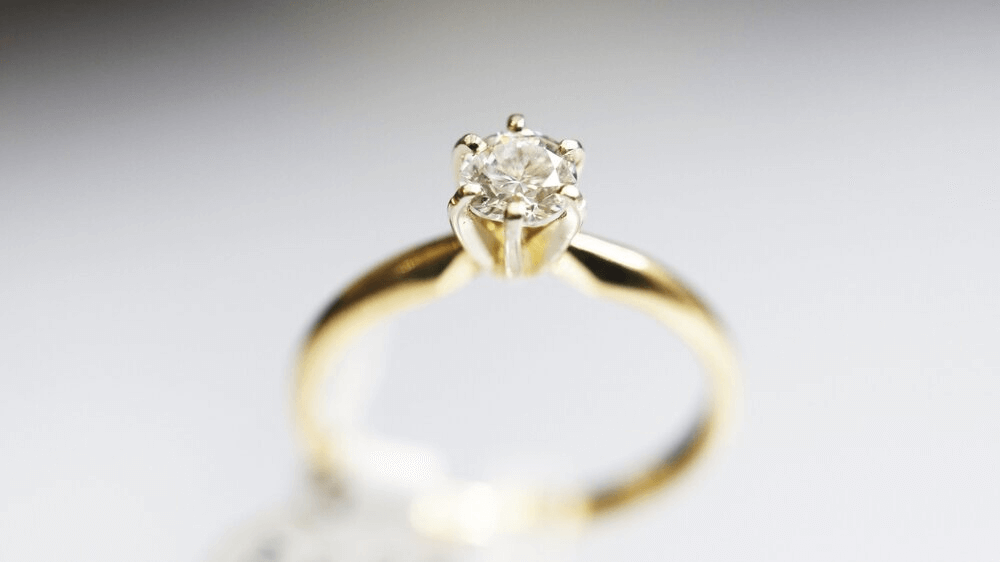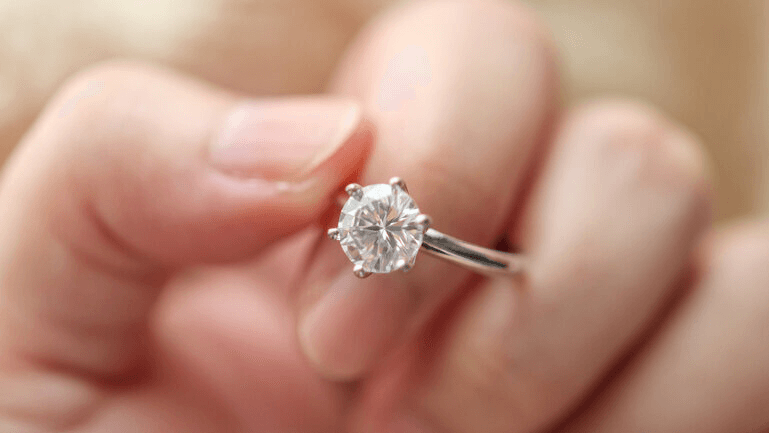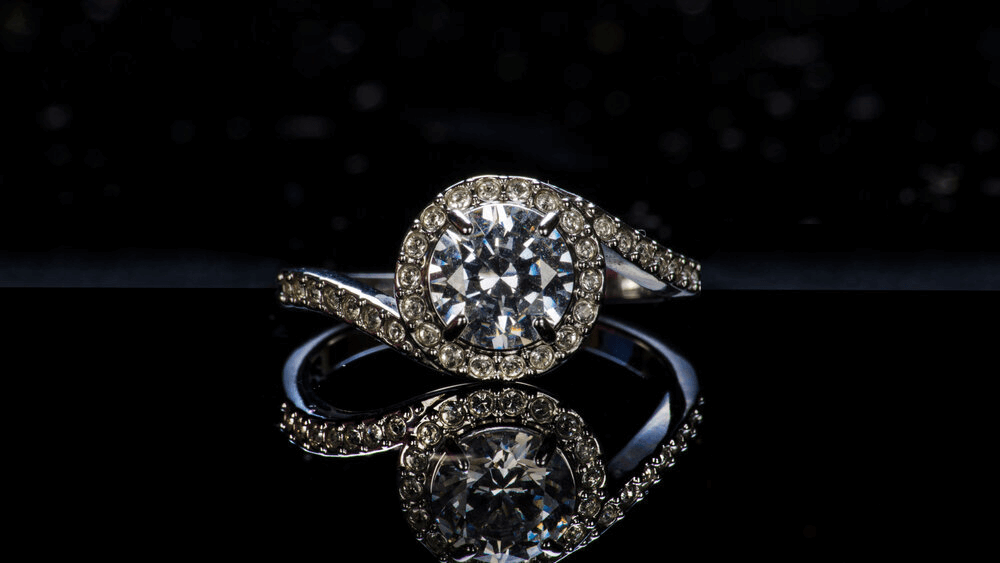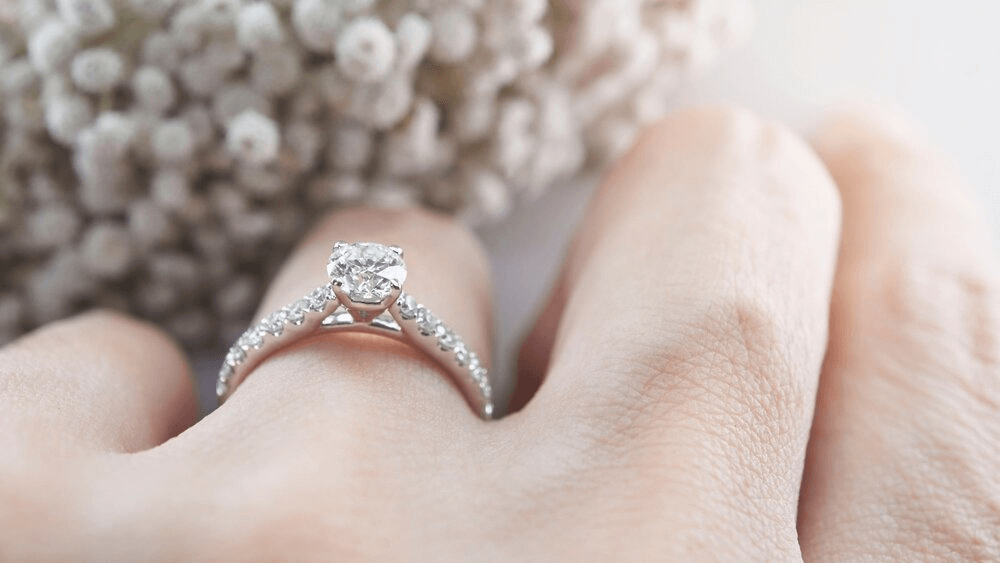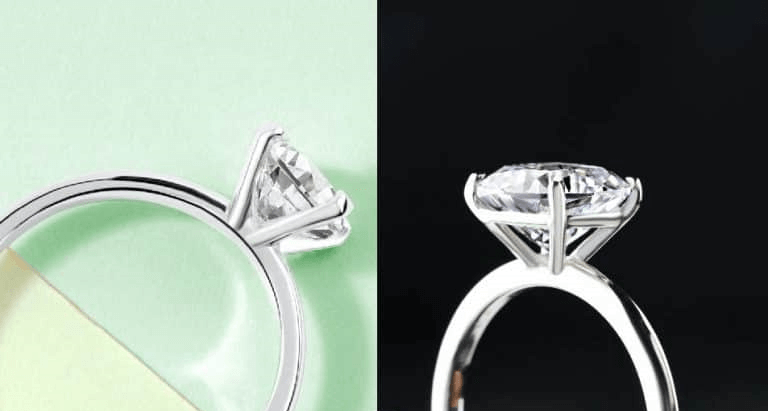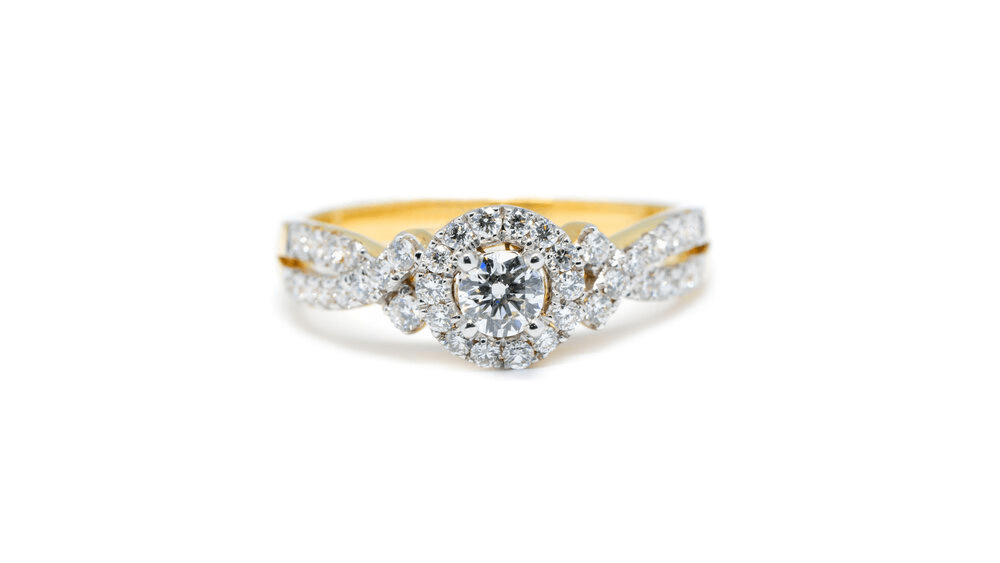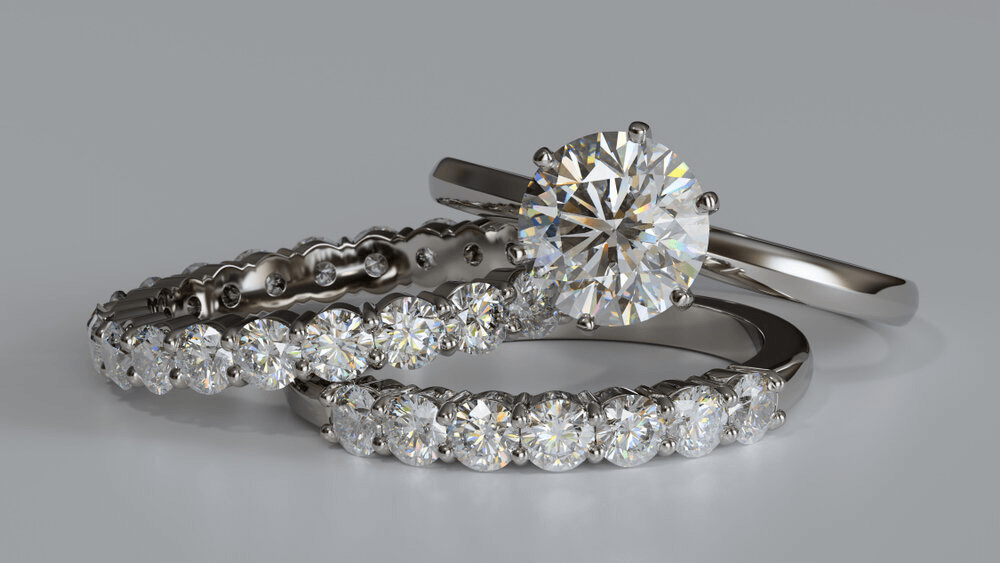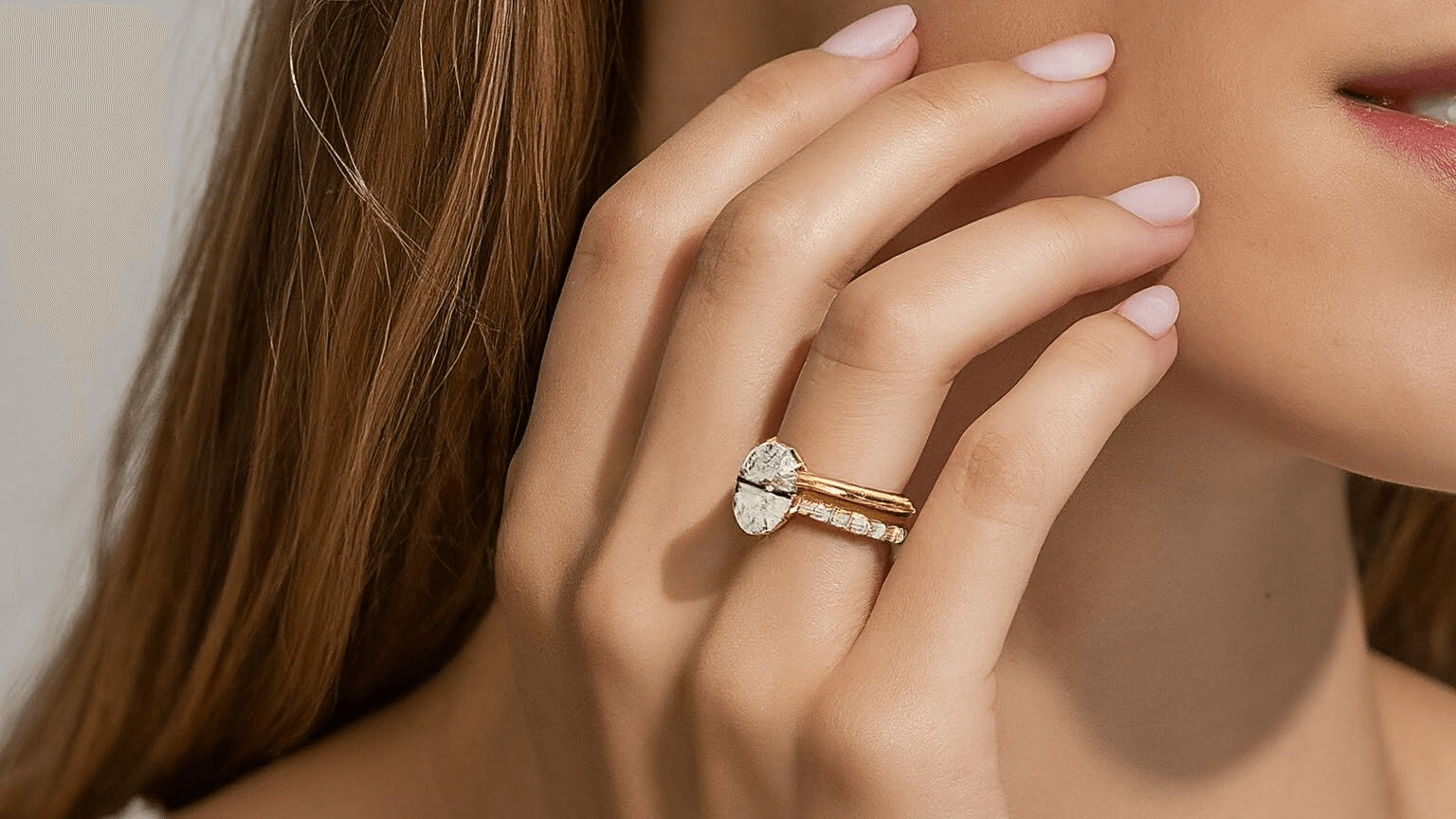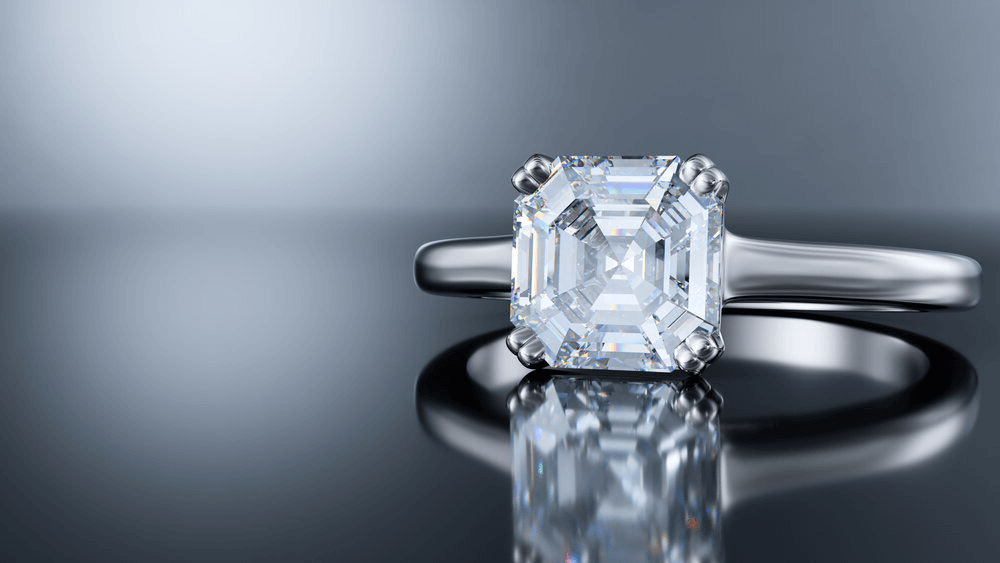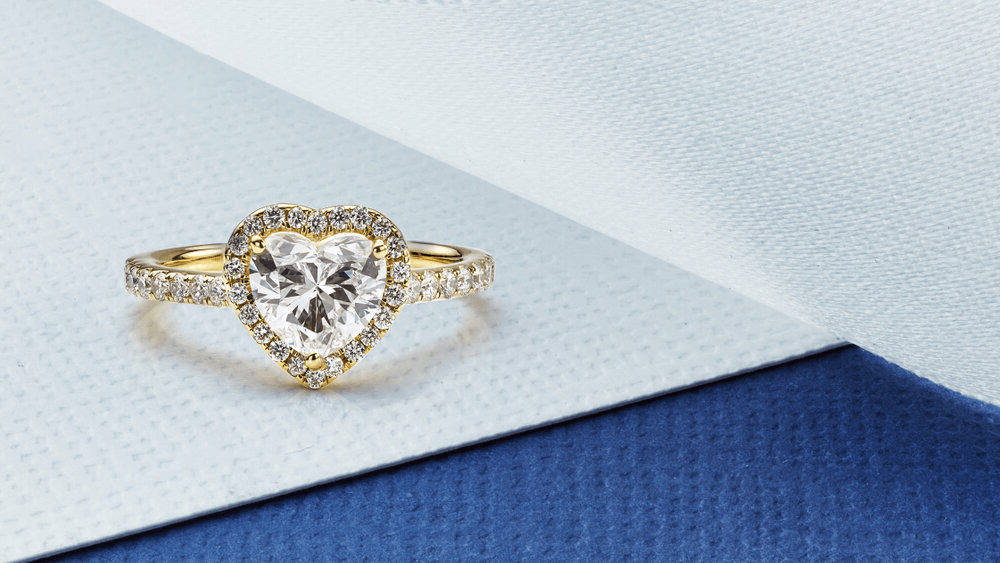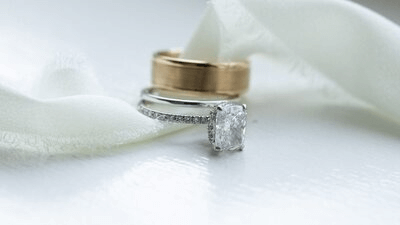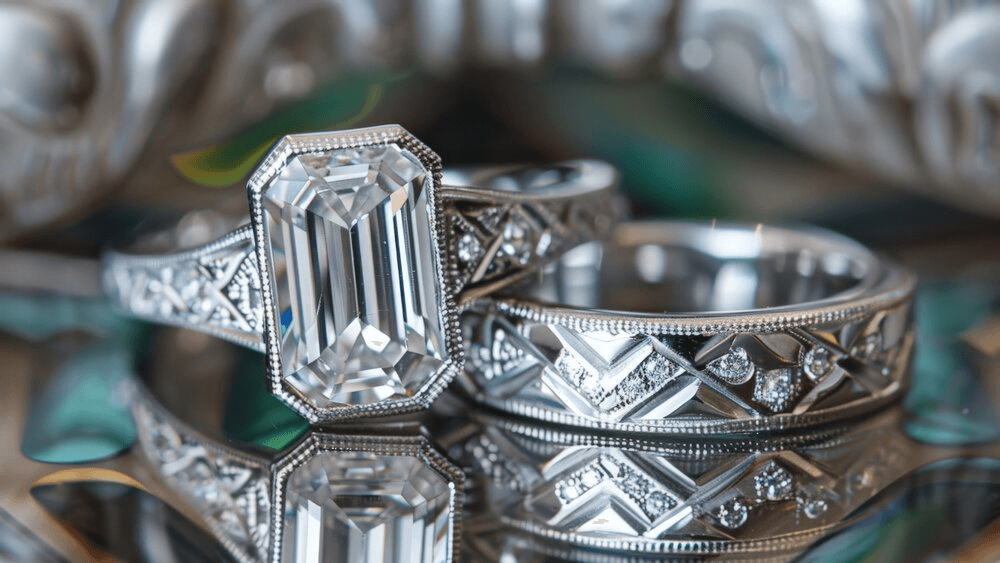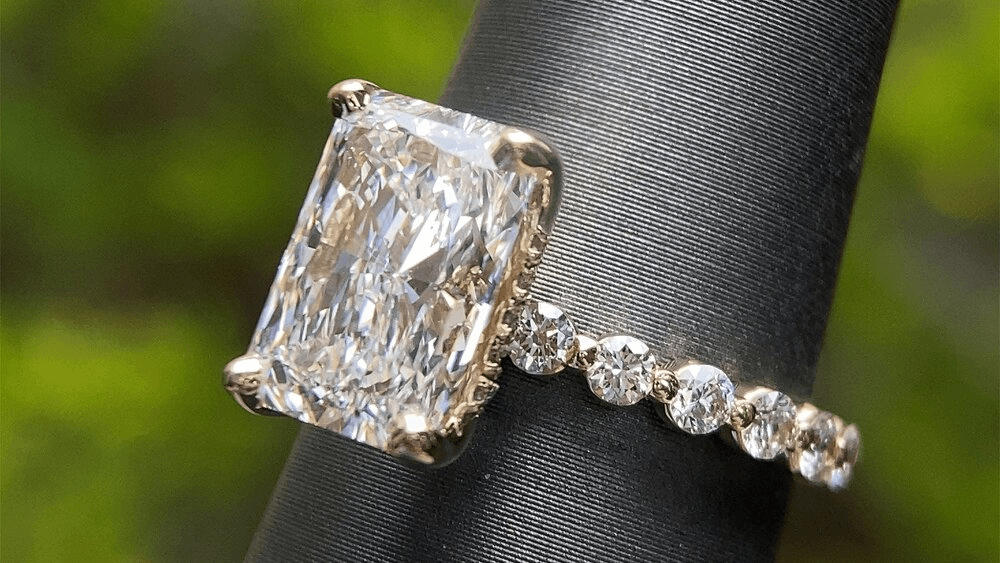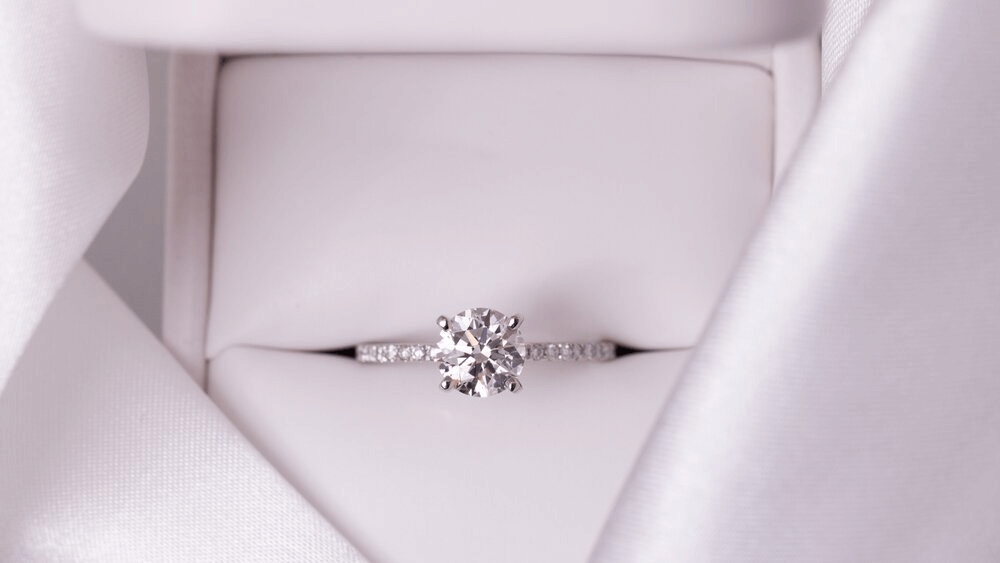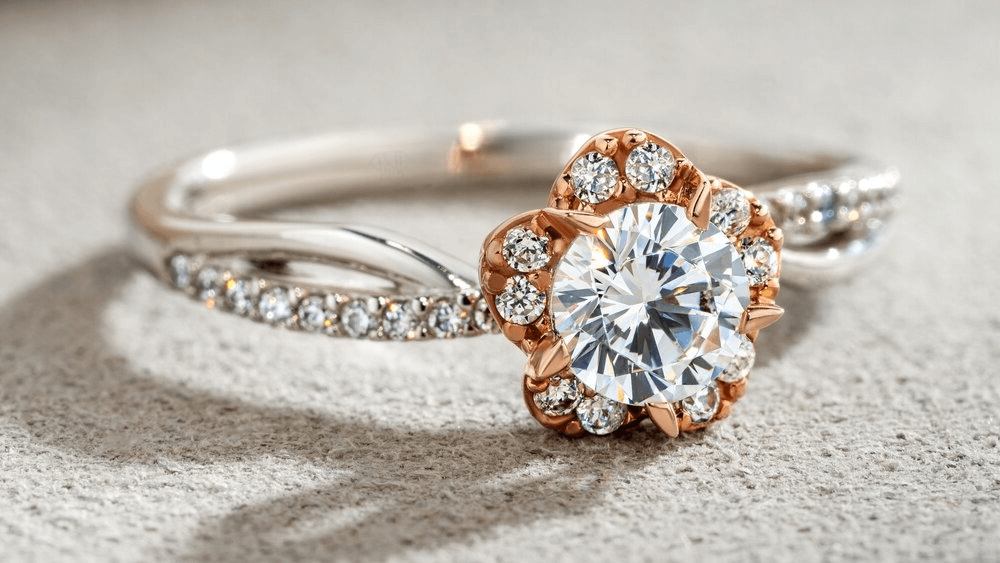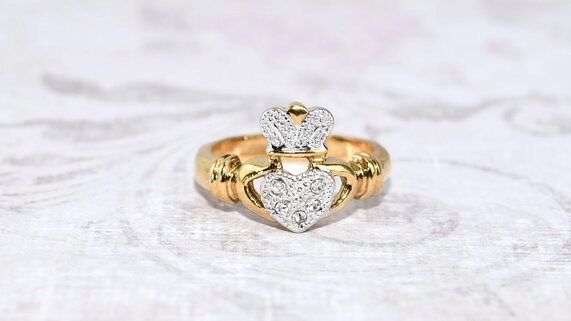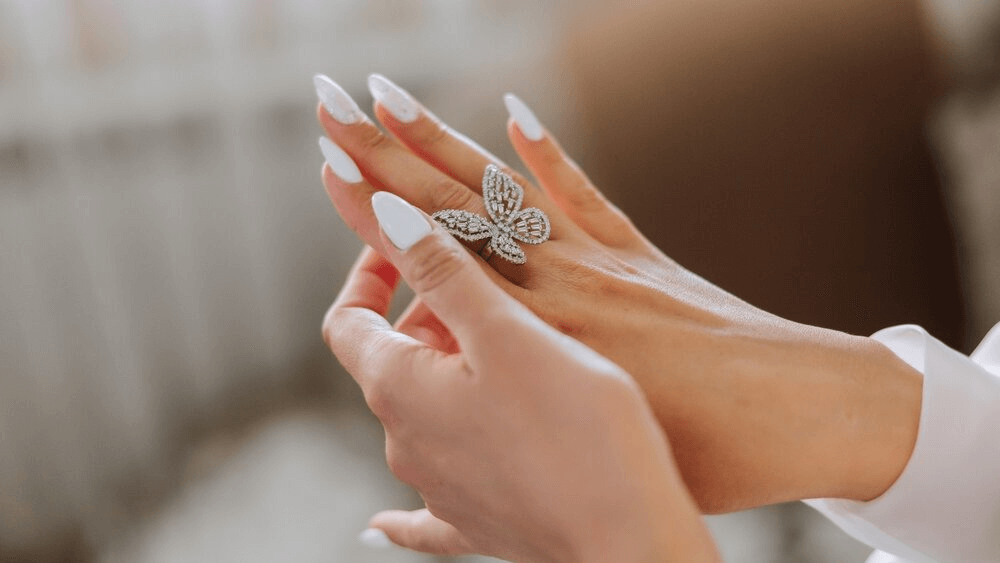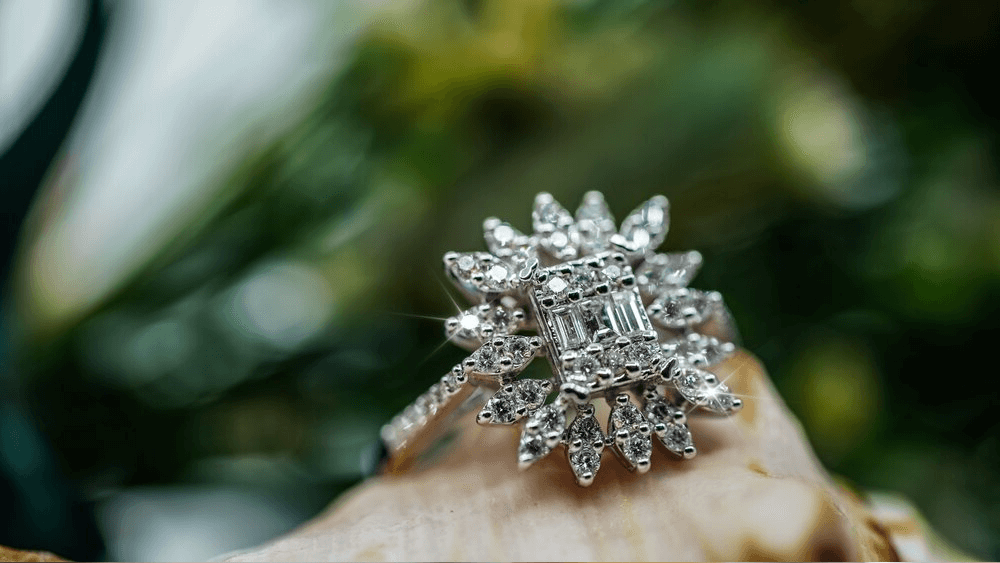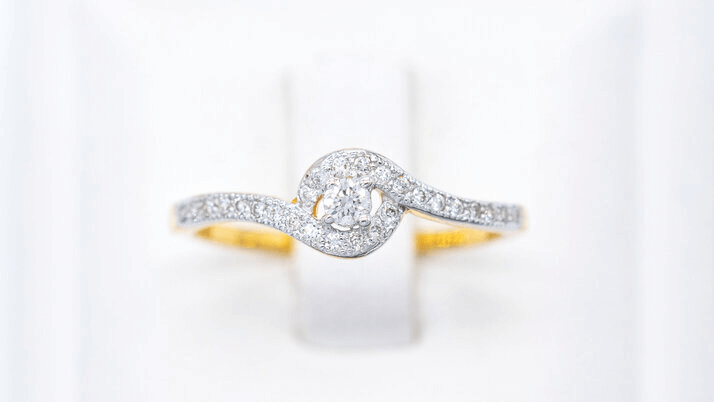Why Princess Cut Rings Are the Ultimate Choice

By Gary A.

Edited by Olivia H.
Published Aug 13, 2024
Edited on Mar 31, 2025
Unlock the enigma of princess cut engagement rings, where modern elegance meets timeless allure—dive into this refined guide to discover why this captivating shape might just be the perfect symbol of your love story.

Navigate this guide:
- 5 Quick Tips When Buying a Princess Cut Diamond Engagement Ring:
- Introduction to the Princess Cut
- A Brief History of the Princess
- Figuring Out the Princess Cut’s Unique Anatomy
- Selecting the Perfect Princess Shaped Engagement Ring
- Wearing and Styling the Princess…Like a Princess
- Our Expert Take
- Frequently Asked Questions about Princess Cut Diamond Engagement Rings
Before we dive deeper into the specifics, here are some practical tips to help guide your decision-making process:
5 Quick Tips When Buying a Princess Cut Diamond Engagement Ring:
Tip 1. Understand the 4Cs:
- Carat: Know the size of the diamond you are purchasing and how it fits in your budget.
- Cut: Ensure that the princess cut is symmetrical and proportionate. The cut impacts the sparkle.
- Color: Learn the color grade; G-H color diamonds typically provide a balance of color and cost.
- Clarity: Princess cut can hide inclusions well, but understand where they are and ensure they don’t impact durability.
Tip 2. Ring Setting Matters:
- Pay attention to the prongs: Ensure they securely hold the diamond and do not overshadow it.
- Choose a setting that complements both the diamond and the wearer’s style (consider a halo for vintage flair or a solitaire for a classic look).
- Check for any loose settings or misalignment, which could risk losing the diamond.
Tip 3. Quality of the Diamond:
- Ensure that the diamond has a certification from a reputable lab (like GIA or AGS) verifying its quality.
- Check the diamond under different lighting to observe its brilliance and any potential flaws.
- Inquire about the diamond’s origin and ensure it adheres to ethical sourcing practices.
Tip 4. Band Material and Durability:
- Choose a metal that suits the wearer’s lifestyle and preference (like platinum for durability or gold for tradition).
- Ensure the band is sturdy and well-constructed to stand up to daily wear.
Tip 5. Choose a Protective Setting:
- Bezel Setting: A bezel encases the diamond, providing solid protection, especially for the corners of a princess cut diamond.
- V-Prong Setting: For princess cuts, V-prong settings protect the four corners from chipping, since they are the most vulnerable areas.
Now that you’ve got these practical tips, use Jeweler AI below to find the perfect engagement ring that suits your style and budget:
Introduction to the Princess Cut
Proposals and weddings should make any one of us feel like royalty. Something about all that tulle, all that crystal cut glassware, all that champagne…and, yes, those diamonds…it all amounts to a very magical time where real life feels like it’s unfolding across the pages of a book of fairy tales.
So, what better diamond shape for your engagement than the one and only princess cut. Modern, but somehow emblematic of a timeless brand of luxury that makes any wearer feel part of royal lineage, this cut is one of our all-time favorites.
Thanks to its modified brilliant facet pattern and clean, crisp silhouette, the Princess offers a very unique appearance. The pattern reflected through the table has been likened to pixels or shards of confetti, only enhanced by a really spectacular show of fire (colored sparkle) that erupts every time the light hits.
This is a knock-out choice for any engagement ring.
A Brief History of the Princess
While the Princess cut is one that requires no introduction, it’s always worth knowing the backstory. The Princess is a relatively modern cut, created in the 1980s, although it evolved from a much older shape, known as the ‘quadrillion cut’, dating back to the 15th century. The Princess Cut was created by a London-based diamond cutter, Arpas Nagy, in order to maximize the sparkle of the shape and create the most fantastic display of fire and brilliance possible.
The Princess Cut’s Popularity
Princess Cuts are incredibly versatile and, while modern, still offer that connection to history thanks to the shape’s link to the quadrillion. It’s no surprise, then, that celebrities are always happy to flash a Princess on the red carpet – or in their personal lives.
Sherri Shephard 2011 engagement to Lamar Sally skyrocketed interest in the princess. A relatively simple 3-carat (at a guess) Princess engagement ring accentuated by a single row of shimmering pavé, it’s no surprise at all that she said, ‘Yes!’
Hilary Duff’s engagement to Mike Comrie was sealed with an incredible three-stone engagement ring featuring a Princess cut – estimated to be around 4 or 5 carats – flanked on either side by two complimentary trap or halfmoon diamonds. The combination of the two different cuts creates a truly stunning effect, particularly alongside a bright platinum shank.
Sarah Michelle Gellar and Katrina Bowden also said yes to Princess cut engagement rings.
Figuring Out the Princess Cut’s Unique Anatomy
The princess cut has a square face-up silhouette, with a particularly open table and four sharp, clean points – one at each corner. The pavilion comprises 4 triangles – each of which holds a number of triangular facets – which create a pyramid shape ending in either another sharp point or a small culet.
The shape is sleek and modern and offers a large face-up appearance thanks to its relatively shallow ideal proportions. This means that a 1 carat princess cut of correct proportions will appear larger than a 1 carat cushion cut of correct proportions since more of the diamond’s weight is concentrated into the pavilion of the cushion (and, as a result, face-up size is sacrificed).
Those four corners are considered ‘weak points’ in the diamond. While diamonds are naturally very hard and durable, it’s not impossible for them to be chipped or broken. Most jewelers would recommend placing a prong at each corner to protect the shape. Alternatively, a bezel or halo offer the most robust protection.
The princess cut isn’t the best at hiding color, but a color grade from the Near Colorless range will suffice. Since a white metal like platinum or white gold will accentuate any slight trace of color, go for an G or H grade; yellow or rose gold can afford you a slightly lower color grade, since some of that metal color will be reflected through the stone anyway.
Selecting the Perfect Princess Shaped Engagement Ring
With the fundamentals covered, here’s what you need to know about finding the princess engagement ring of her dreams.
Choosing a Setting Fit for a Princess
Princess cuts really sing when they’re paired with a more contemporary setting. Since those facets create a unique, icy pattern throughout the diamond’s center, we love the way this cut looks with a platinum setting, particularly a knife edge or split shank. The princess brings so much of its own sparkle – even if it’s always going to fall behind the round brilliant’s light performance – that accent stones are very much optional.
That said, you can’t go wrong with a pavé.
Also, consider the option to get Princess cut melee diamonds channel set in the shank of your ring. If you feel like your heart is pulling you toward the round brilliant, that doesn’t mean you have to give up on the princess altogether. That, or combine two different shapes in a three-stone engagement ring design. The simple silhouette of the princess means it pairs with any shape you can dream of…
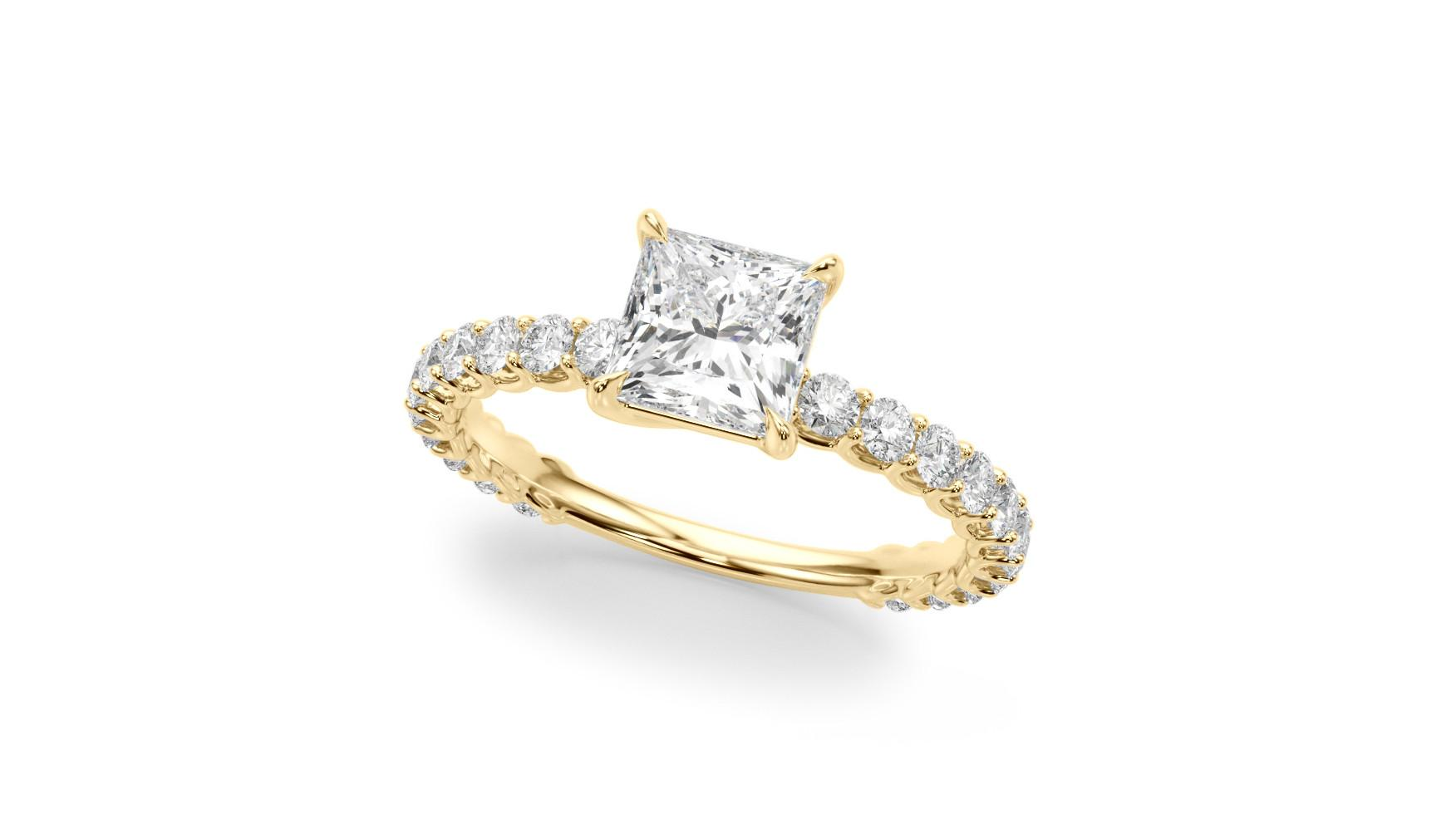
Considering Metal Types for Princess Diamonds
As we mentioned above, color isn’t necessarily high on the princess cut’s list of priorities. It’s certainly better at concealing a small amount of color than, say, the cushion cut, but the round brilliant is definitely superior.
Platinum or white gold demand a better color grade, and a princess without any visible color will help achieve that stark, star-like brightness better than virtually any other shape out there. Gold looks incredible with the princess too, but be prepared for some of that yellow or rose color to reflect through the diamond.
A lot of people really value that reflection, so don’t worry about it getting confused with a low-quality diamond.
Wearing and Styling the Princess…Like a Princess
While the name alone might conjure up images of vine-covered towers, ball gowns, glass slippers and singing birds, the reality is far different. This princess has edge, style, personality and all the makings of a modern classic. Its complex facet pattern makes it a hyper-feminine choice thanks to all the excess fire and brilliance, but it pairs perfectly with a more down-to-earth, polished style.
Whether you’re pairing your ring with a pantsuit, a leather jacket and skinny jeans, a fairycore dress or something a lot more casual, the princess will never look out of place on your finger…and it’ll always turn heads.
Our Expert Take
We love the princess cut – if that much wasn’t clear by now. It’s the perfect combination of modern and traditional, edge and softness, sparkle and sophistication. More affordable than the round brilliant, edgier (literally) than the cushion, and fierier than the Asscher, the princess is one to bump to the top of your shortlist today.
Frequently Asked Questions about Princess Cut Diamond Engagement Rings
- Q: What makes a princess cut diamond unique?
- A: A princess cut diamond is known for its square shape and pointed corners, offering a contemporary look with exceptional brilliance and fire, similar to that of a round cut diamond.
- Q: How should I choose the carat size for a princess cut diamond?
- A: Consider your budget and the ring’s overall appearance. Larger carat sizes offer more presence but can significantly increase the price. Balance size with quality to find the best value.
- Q: What is the best color grade for a princess cut diamond?
- A: G-H color grades are often recommended for a good balance between a near-colorless appearance and value. Diamonds in this range appear white, especially when set in white gold or platinum.
- Q: How important is clarity in a princess cut diamond?
- A: While clarity is important, princess cuts can hide certain inclusions well. Look for a diamond where inclusions aren’t visible to the naked eye (typically SI1 or better) for a good blend of beauty and value.
- Q: What type of setting is best for a princess cut diamond?
- A: Settings with V-prongs are ideal as they protect the vulnerable corners of the diamond. Bezel settings can also provide additional protection and a sleek, modern look.
- Q: Can princess cut diamonds chip easily?
- A: Like all diamonds, princess cuts can chip if hit with enough force, especially at their corners. A protective setting can help minimize this risk.
- Q: Are princess cut diamonds more affordable than round cut diamonds?
- A: Princess cut diamonds can be more affordable per carat than round cut diamonds due to their cutting process, which preserves more of the raw diamond.
- Q: How do I ensure the princess cut diamond is ethically sourced?
- A: Look for diamonds certified by reputable organizations like the GIA or AGS and inquire about the retailer’s sourcing policies to ensure ethical practices.
- Q: Can I pair a princess cut engagement ring with a wedding band?
- A: Yes, princess cut engagement rings can be beautifully paired with wedding bands. Consider a band that complements or matches the engagement ring’s style for a cohesive look.
- Q: How do I care for my princess cut diamond ring?
- A: Regularly clean your ring with a gentle solution, avoid harsh chemicals, and have it inspected by a professional jeweler annually to ensure the setting and prongs remain secure.
Find your perfect princess cut ring with Jeweler AI – where elegance meets precision.
FOLLOW-UP GUIDE SERIES





